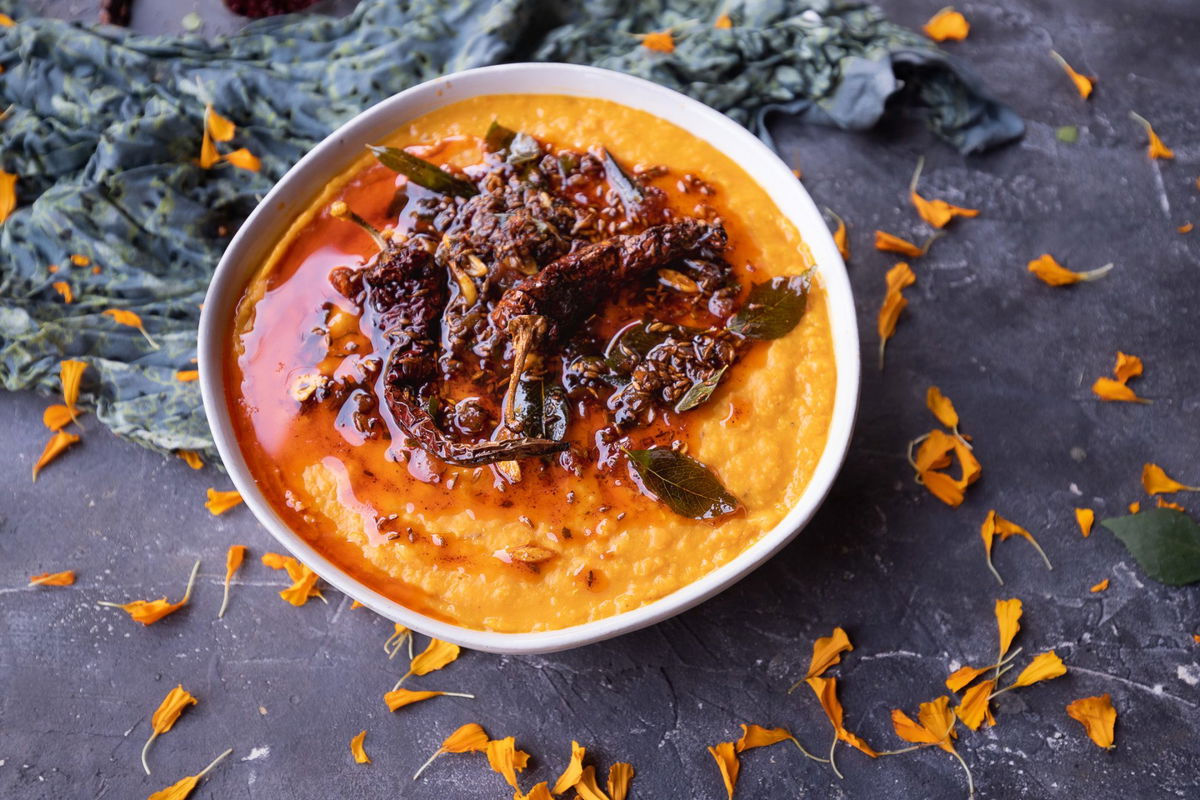Rava no Sheero, also known as Suji ka Halwa, is a simple and comforting dessert made from semolina, ghee, and sugar. It’s one of those simple, beloved sweets found in nearly every Indian household—served during pujas, celebrations, and even casual Sunday breakfasts.
While it shares roots with European-style semolina pudding, Sheero is unmistakably Indian, thanks to the warm notes of cardamom, nutmeg, and saffron. It’s quick to make, deeply nostalgic, and endlessly adaptable.
About this Recipe
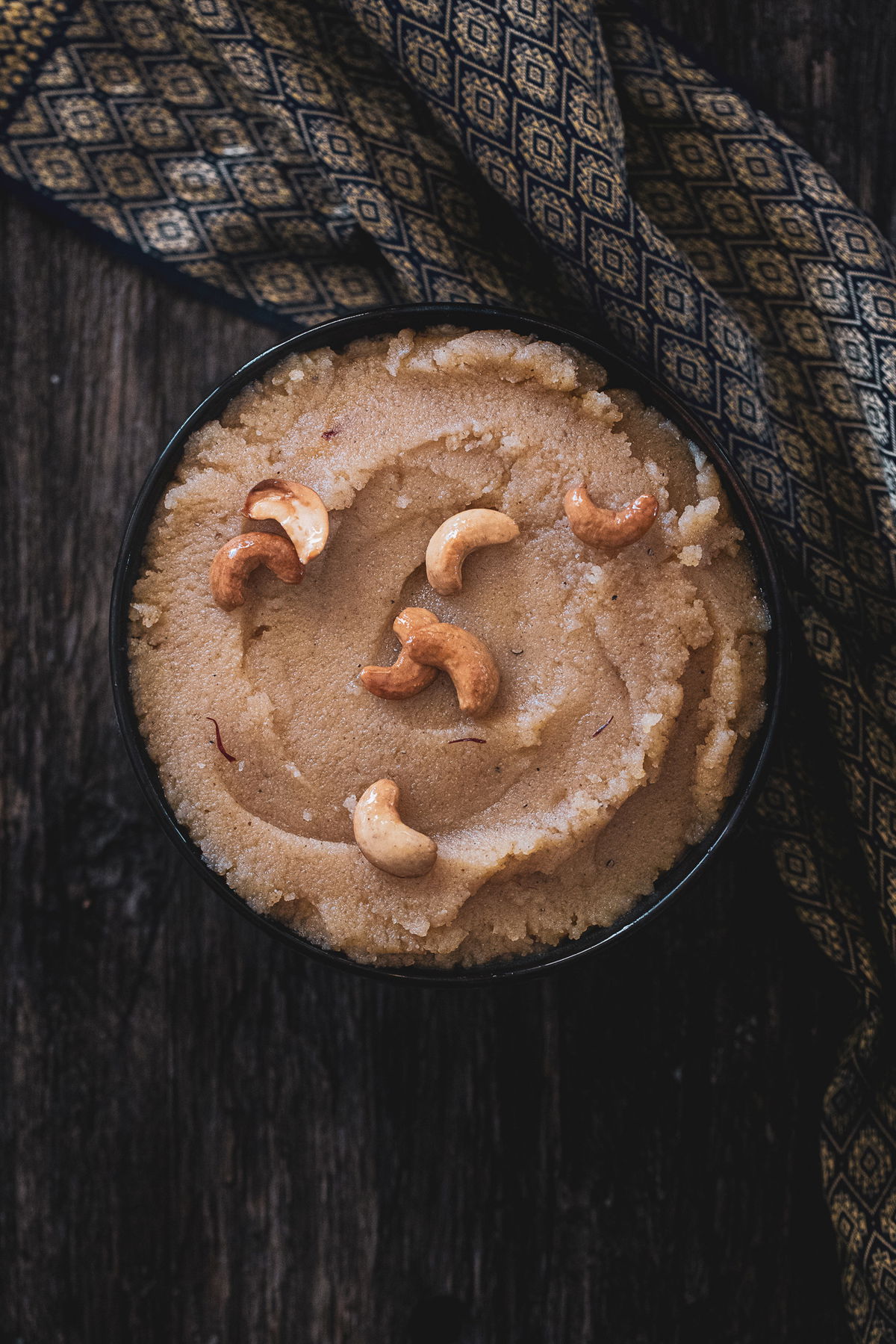
This recipe is based on my mom’s version—one she often makes for family gatherings or as prasad during Satyanarayan Puja. She varies the ingredients depending on the occasion—sometimes cutting back on the sugar and ghee, other times skipping the saffron. When making Bajra Halwa, she often adds almond flour, which you can also add here for a richer flavor.
Ingredients
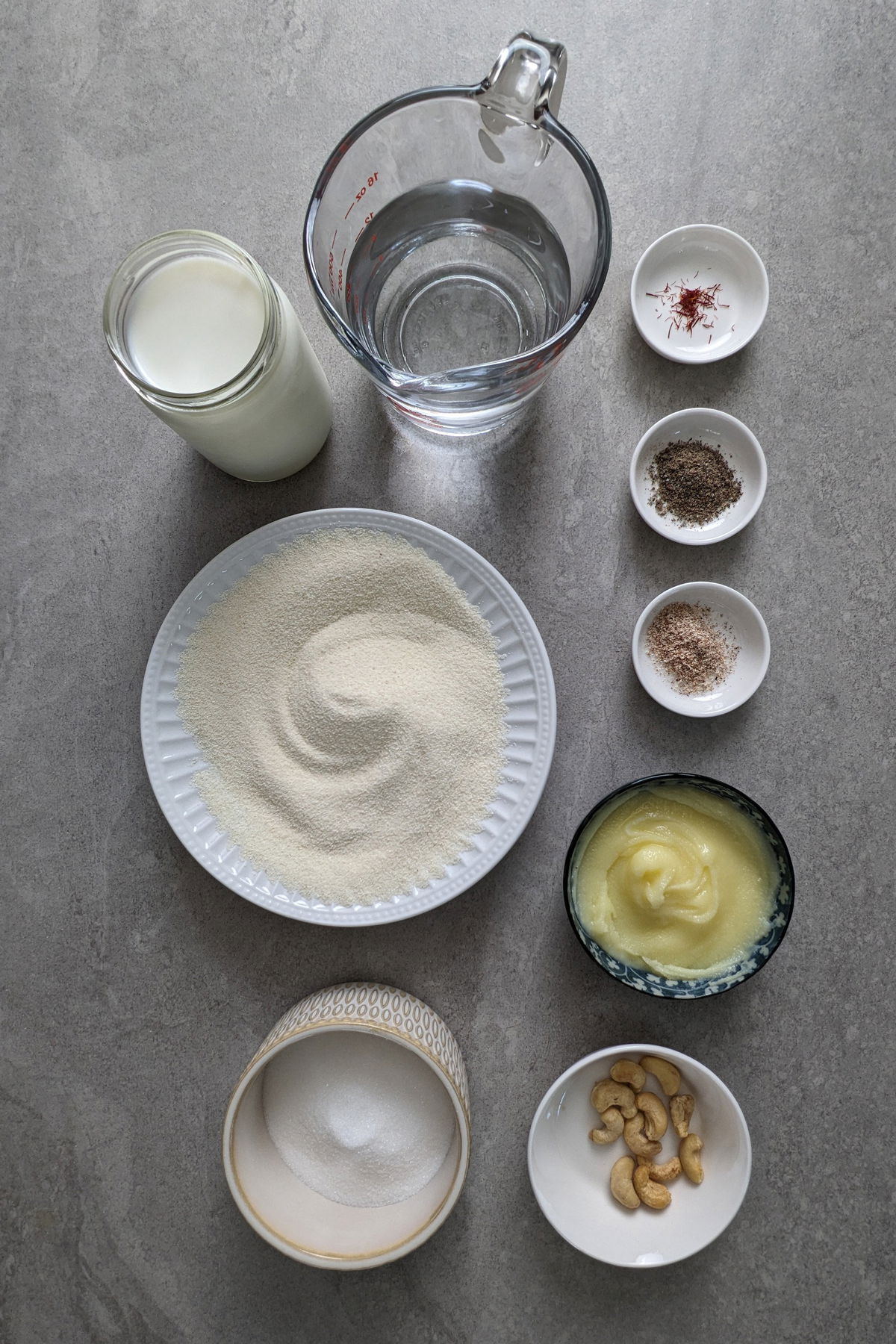
Semolina – a coarsely ground wheat flour, the same flour used to make Cream of Wheat.
Semolina (Rava/Suji) – Coarsely ground wheat that forms the base of the dish. It toasts beautifully in ghee, giving this sheero its signature nutty flavor and texture. The same semolina is used for Cream of Wheat.
Ghee – Clarified butter that adds richness and a golden hue. Ghee is essential to the depth of flavor and aroma in sheero. Be generous with it for a traditional taste.
Sugar – Adds sweetness and helps bind everything together. Adjust based on your taste or occasion.
Milk – Adds creaminess and helps soften the semolina. It enriches the texture and gives the halwa body. You can use all milk or half milk and half water. I prefer the richer texture of an all milk sheero. You can also use a non-dairy milk if you prefer.
Cardamom – The signature spice of Indian desserts. Floral and aromatic, it’s the heart of sheero’s flavor.
Nutmeg – Adds warmth and depth. A pinch elevates the overall profile and balances the sweetness.
Saffron (optional) – Adds fragrance and color. If using, bloom it with an ice cube or in warm milk before adding.
Cashews – Toasted in ghee until golden, they add texture and nutty bursts in every bite. These are optional.
Salt – Not traditional but I find that just a pinch enhances the flavors and prevents the sweetness from becoming cloying.
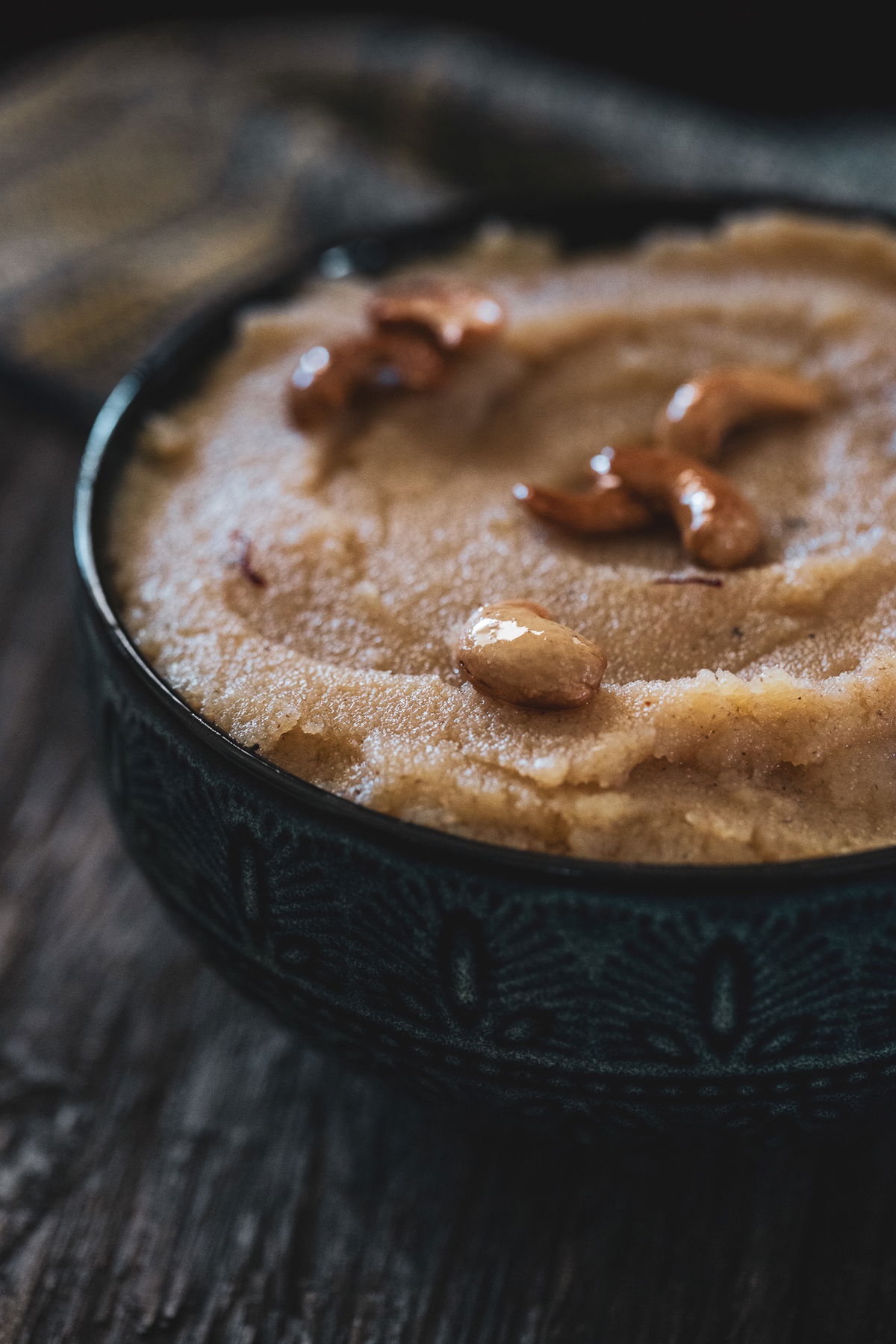
Serving
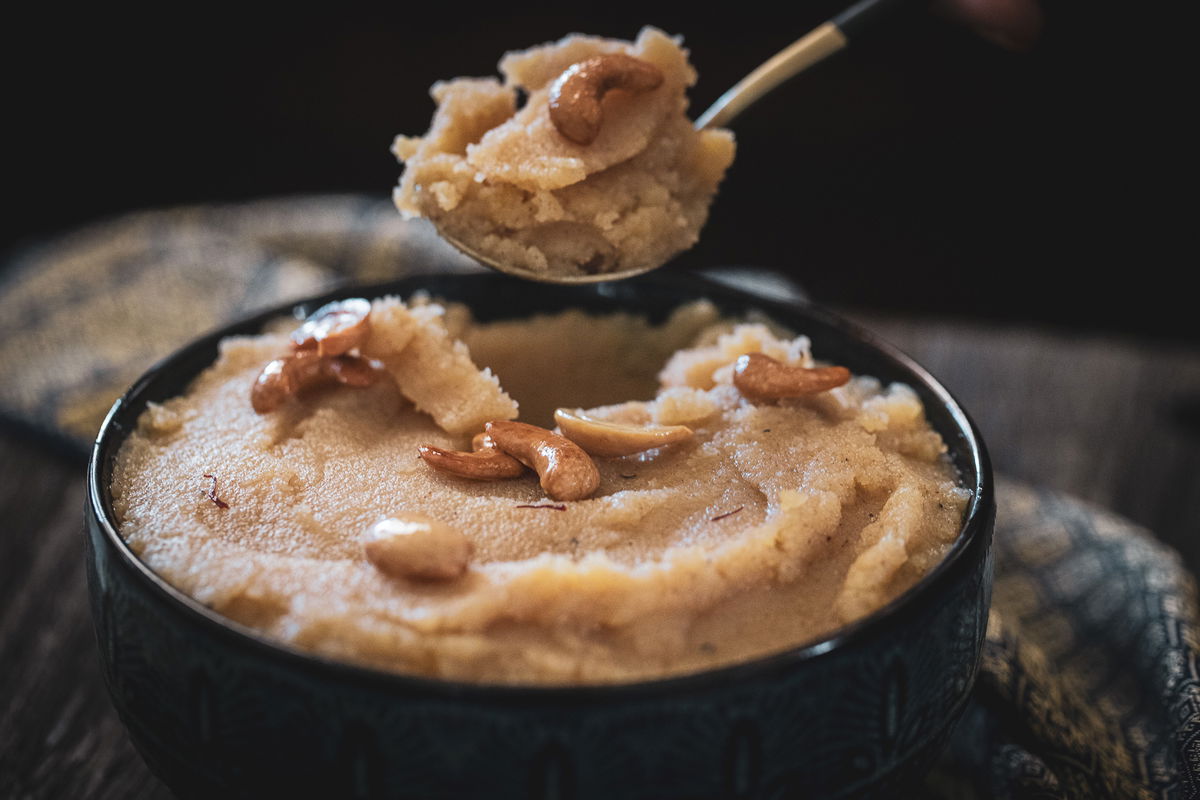
Rava no sheero is traditionally served as part of a thali, where a sweet is essential to round out the meal. It pairs beautifully with kala chana, puri, or other festive dishes.
Serve it warm, spooned straight from the pan into bowls. For a neater presentation, press it into a mold or tray and cut into bars.
Cooking Tips
- Toast the semolina well. This is key. Don’t rush it—take the time to get a deep golden color for the best flavor.
- Bloom the saffron. Bloom by placing an ice cube on the saffron. Or steep it in a bit of warm water or milk before adding to maximize color and aroma.
- Add-ins welcome. Replace up to ½ cup of semolina for almond flour for richness. Or add golden raisins for a chewy surprise.
- Customize your nuts. Swap cashews for almonds or pistachios—or use a mix!
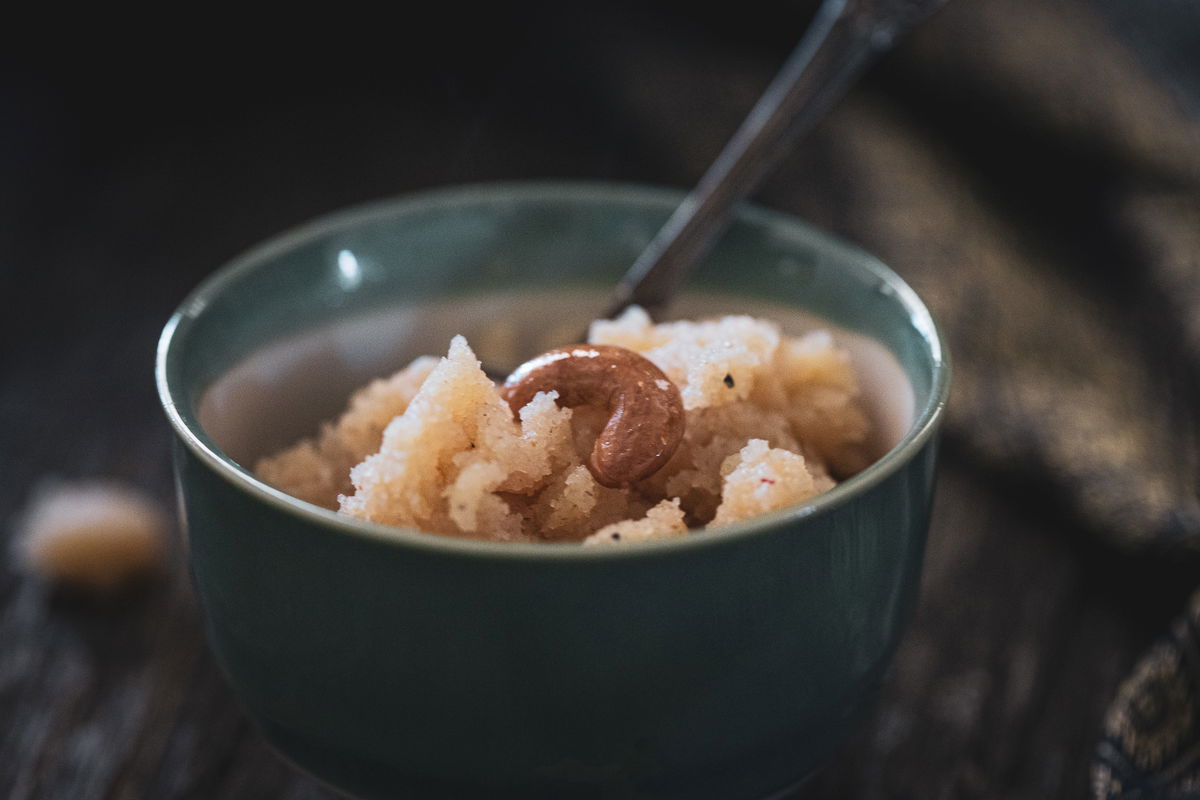
Refrigerating
- Refrigerate in an airtight container for up to 5 days. Reheat in the microwave or enjoy cold.
- Freeze for up to 3 months. Thaw and reheat gently before serving.
Rava Sheero | Suji Halwa | Semolina Pudding
Rava sheero is a simple sweet confection made with semolina, ghee, and sugar.
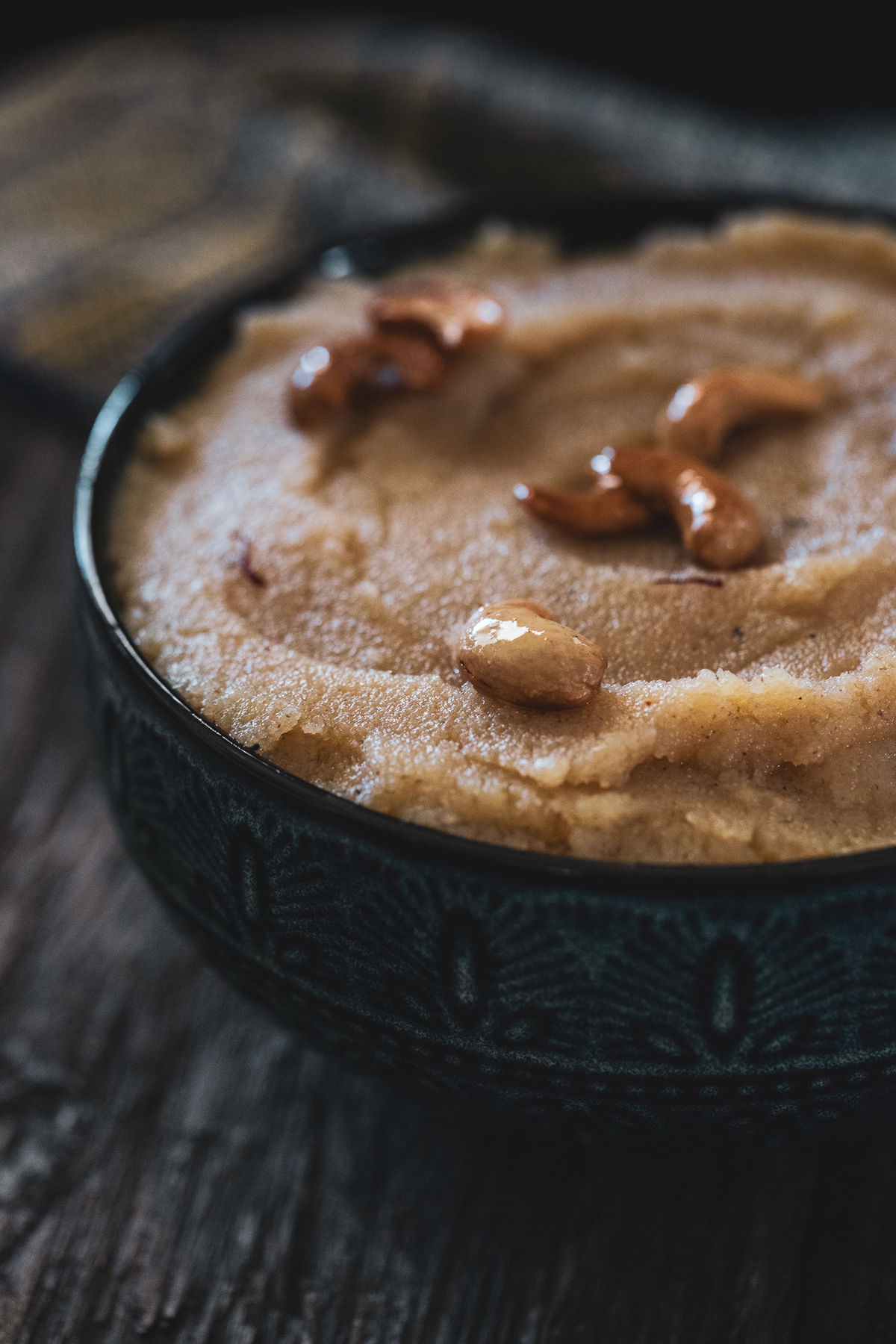
Ingredients
- 1 1/2 cups rava (semolina flour)
- 1 1/2 cups sugar
- 3 cups milk
- 1 cup ghee
- 1/4 tsp nutmeg
- 1/2 tsp cardamom
- 6 cashews
- Pinch salt
- Pinch saffron (optional)
Instructions
- Heat ghee in a pan. Add cashews and toast until golden. Remove and set aside.
- In the same ghee, add semolina. Toast over medium heat for 5–7 minutes or until it smells nutty and turns golden brown. Be careful not to burn the semolina.
- Add milk and water carefully. Stir continuously to avoid lumps.
- Once the mixture thickens, add sugar and saffron (if using). Stir until sugar dissolves completely.
- Add the toasted cashews, nutmeg, cardamom, and salt. Mix well and cook for another 1–2 minutes.
- Serve hot or set in a tray to cut into pieces once cool.
